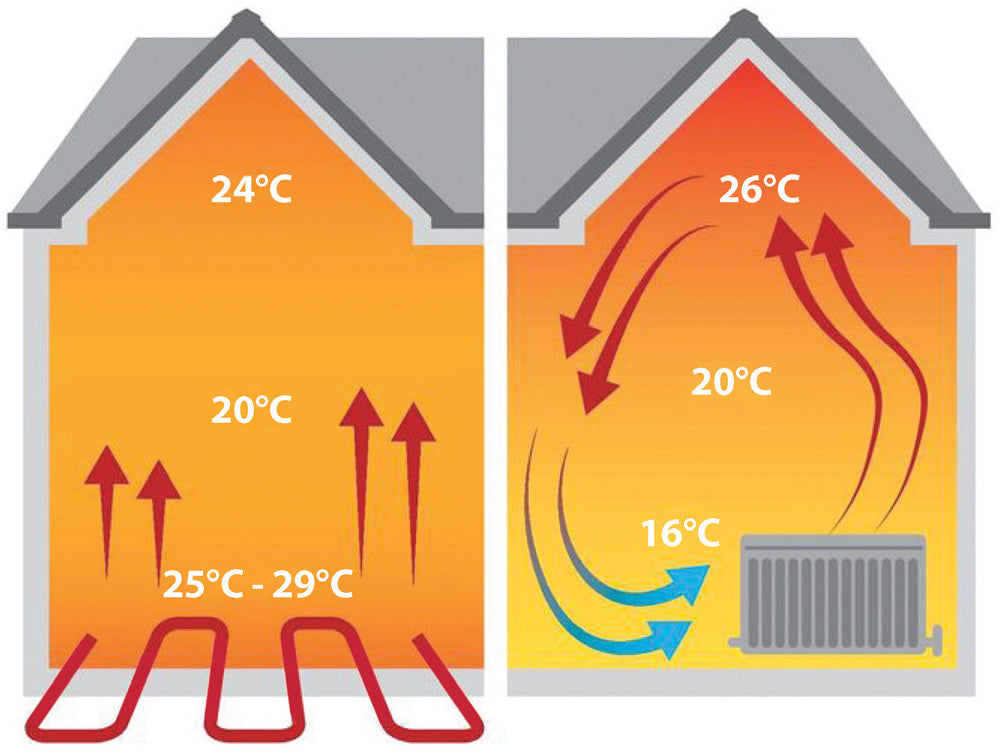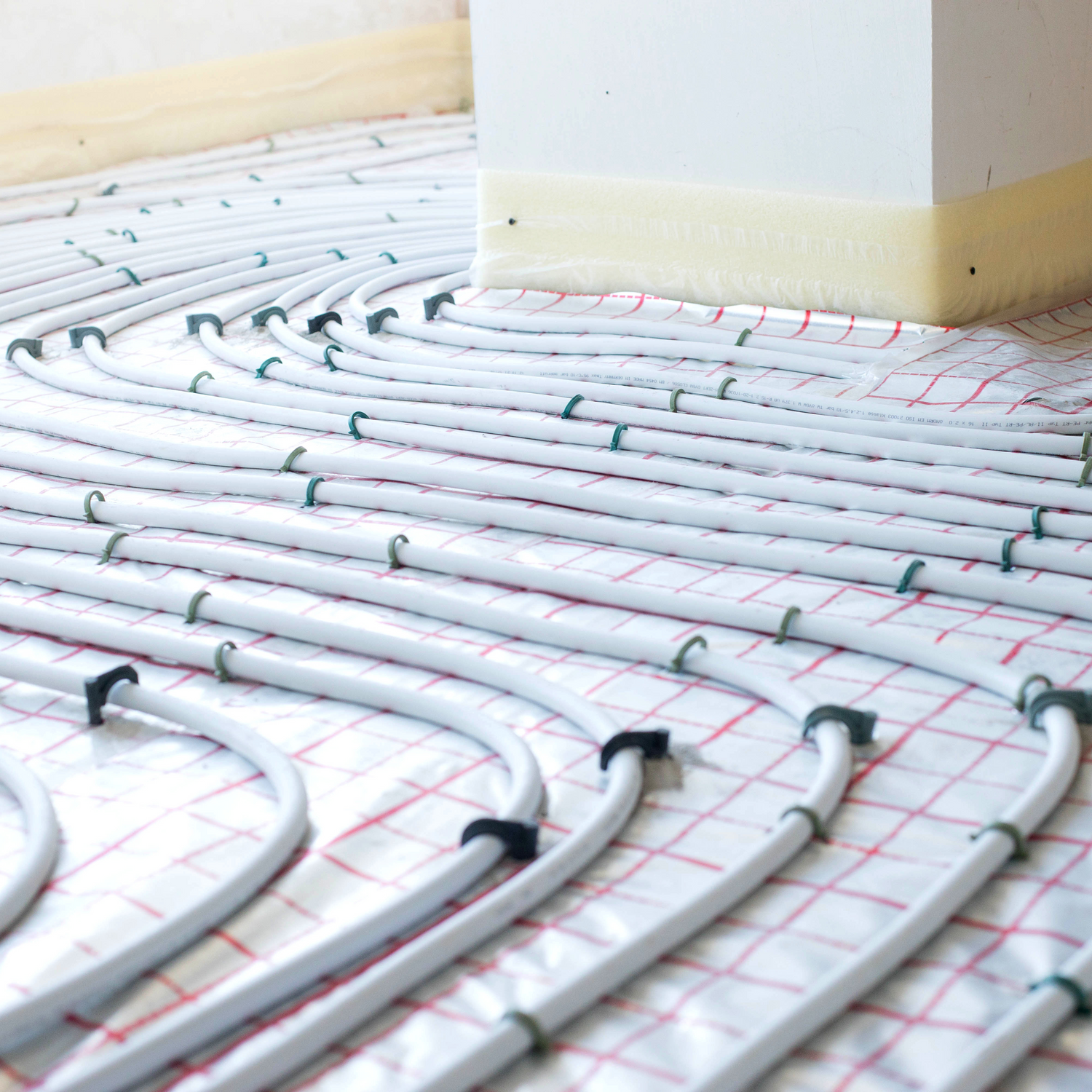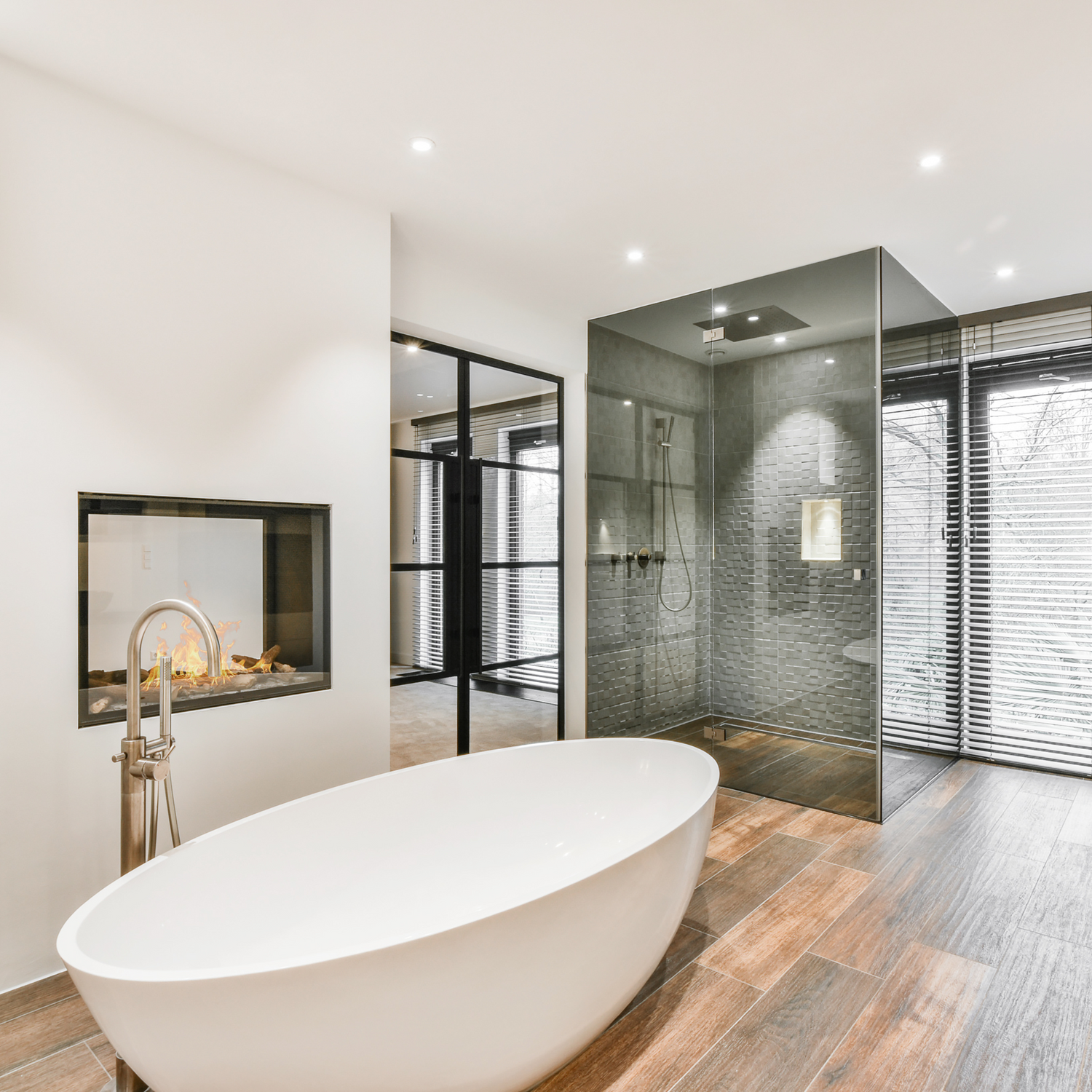Call 01202 879197
to speak to an expert
Radiators have been the conventional choice for home heating for many years. However, the emergence of underfloor heating as a popular alternative has introduced a new dynamic to the heating system competition. The underfloor heating versus radiators debate raises questions about affordability, convenience, and overall warmth in our homes.
When comparing underfloor heating to radiators, various crucial factors come into play. While cost is a significant consideration, the ease of installation, design practicalities, and maintenance requirements also influence the decision-making process
Underfloor heating is versatile and adaptable to any room in your property. Whether you opt for water-based or electric systems, or choose from low-profile to screed UFH variants, there's a suitable solution available to fulfill your heating requirements.
Here are some of the main differences between Underfloor Heating Systems and Radiators:

Underfloor heating offers an even distribution of heat throughout the room, unlike radiators which often lead to hot spots near the unit and cooler areas farther away. This ensures a more uniform and comfortable temperature across the entire space, enhancing overall warmth and comfort.

Underfloor heating offers a space-saving solution by eliminating the need for bulky radiators. This frees up valuable wall space, providing greater flexibility in room layout and interior design. With radiators removed from the equation, homeowners have the opportunity to optimise their space utilisation and create a more aesthetically pleasing environment without compromising on heating efficiency.

Underfloor heating systems operate at lower temperatures than radiators, leading to significant energy savings, especially with energy-efficient heat sources like heat pumps. They require temperatures of 29 degrees Celsius or less, reducing energy consumption and bills. Unlike radiators, they provide consistent warmth throughout the space, eliminating cold spots. With precise temperature control, underfloor heating avoids overheating. It can potentially save up to 40% on heating bills compared to traditional radiators.

Water underfloor heating systems offer substantial cost savings compared to electric underfloor heating and traditional radiator systems. The operational cost of water underfloor heating is approximately one-third lower than that of electric underfloor heating, making it a more economical choice in the long run. Moreover, when compared to the ongoing expenses associated with radiator systems, water underfloor heating proves to be a more cost-effective solution over time. These cost advantages translate into significant savings for homeowners, potentially amounting to up to 15% for the average family home.

Underfloor heating systems can be divided into zones, allowing for precise control over which areas of the house receive heat and when. This zoning capability enables homeowners to save energy by only heating occupied rooms. By segmenting the heating system into zones, occupants can optimize energy consumption and ensure personalized comfort levels according to individual preferences and usage patterns.

By eliminating the need for radiators that traditionally occupy wall space, underfloor heating systems contribute to a cleaner and more streamlined appearance in rooms, thereby elevating the overall aesthetics of the space. With the absence of bulky radiators, homeowners have the freedom to design and arrange furniture without constraints imposed by radiator placement. This increased flexibility in room layout not only enhances the visual appeal but also creates a sense of spaciousness and openness.